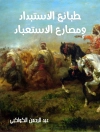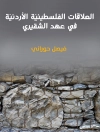A Passage to India E. M. Forster – First published in 1924, A Passage to India is E. M. Forsters classic tale of prejudice and misunderstanding in colonial India. Widely considered to be one of the best novels of 20th century English literature, A Passage to India was based on Forsters own experiences in India while it was under the rule of the British Raj and the Indian independence movement was gaining in popularity. The novel centers around the tensions between the native people of India and the prejudices of the British ruling class. The central character is Dr. Aziz, a young Indian Muslim physician, who befriends several English visitors, against the advice of his Indian friends. Dr. Aziz is kind and helpful to the young Adela Quested and her elderly friend, Mrs. Moore, who are visiting India from England. He offers to take them sightseeing at a famous cave and a terrible misunderstanding ensues, which results in the innocent and trusting Dr. Aziz being accused of a terrible crime against Adela. Forsters depiction of Dr. Azizs fight for his freedom and his reputation, against the prejudices and misconceptions fostered by the British rule of India, has made this novel a timeless masterpiece of racial tension and oppression. This edition includes a biographical afterword.
Yazar hakkında
Edward Morgan Forster, generally published as E.M. Forster, was an novelist, essayist, and short story writer. He is known best for his ironic and well-plotted novels examining class difference and hypocrisy in early 20th-century British society. His humanistic impulse toward understanding and sympathy may be aptly summed up in the epigraph to his 1910 novel Howards End: ‘Only connect’.He had five novels published in his lifetime, achieving his greatest success with A Passage to India (1924) which takes as its subject the relationship between East and West, seen through the lens of India in the later days of the British Raj.Forster’s views as a secular humanist are at the heart of his work, which often depicts the pursuit of personal connections in spite of the restrictions of contemporary society. He is noted for his use of symbolism as a technique in his novels, and he has been criticised for his attachment to mysticism. His other works include Where Angels Fear to Tread (1905), The Longest Journey (1907), A Room with a View (1908) and Maurice (1971), his posthumously published novel which tells of the coming of age of an explicitly gay male character












